- Home
- Peter Ackroyd
Thames Page 2
Thames Read online
Page 2
CHAPTER 2
The River as Metaphor
The river runs through the language, and we speak of its influence in every conceivable context. It is employed to characterise life and death, time and destiny; it is used as a metaphor for continuity and dissolution, for intimacy and transitoriness, for art and history, for poetry itself. In The Principles of Psychology (1890) William James first coined the phrase “stream of consciousness” in which “every definite image of the mind is steeped…in the free water that flows around it.” Thus “it flows” like the river itself. Yet the river is also a token of the unconscious, with its suggestion of depth and invisible life.
The river is a symbol of eternity, in its unending cycle of movement and change. It is one of the few such symbols that can readily be understood, or appreciated, and in the continuing stream the mind or soul can begin to contemplate its own possible immortality.
In the poetry of John Denham’s “Cooper’s Hill” (1642), the Thames is a metaphor for human life. How slight its beginning, how confident its continuing course, how ineluctable its destination within the great ocean:
Hasting to pay his tribute to the sea,
Like mortal life to meet eternity.
The poetry of the Thames has always emphasised its affiliations with human purpose and with human realities. So the personality of the river changes in the course of its journey from the purity of its origins to the broad reaches of the commercial world. The river in its infancy is undefiled, innocent and clear. By the time it is closely pent in by the city, it has become dank and foul, defiled by greed and speculation. In this regress it is the paradigm of human life and of human history. Yet the river has one great advantage over its metaphoric companions. It returns to its source, and its corruption can be reversed. That is why baptism was once instinctively associated with the river. The Thames has been an emblem of redemption and of renewal, of the hope of escaping from time itself.
When Wordsworth observed the river at low tide, with the vista of the “mighty heart” of London “lying still,” he used the imagery of human circulation. It is the image of the river as blood, pulsing through the veins and arteries of its terrain, without which the life of London would seize up. Sir Walter Raleigh, contemplating the Thames from the walk by his cell in the Tower, remarked that the “blood which disperseth itself by the branches or veins through all the body, may be resembled to these waters which are carried by brooks and rivers overall the earth.” He wrote his History of the World (1610) from his prison cell, and was deeply imbued with the current of the Thames as a model of human destiny. It has been used as the symbol for the unfolding of events in time, and carries the burden of past events upon its back. For Raleigh the freight of time grew ever more complex and wearisome as it proceeded from its source; human life had become darker and deeper, less pure and more susceptible to the tides of affairs. There was one difference Raleigh noticed in his history, when he declared that “for this tide of man’s life, after it once turneth and declineth, ever runneth with a perpetual ebb and falling stream, but never floweth again.”
The Thames has also been understood as a mirror of morality. The bending rushes and the yielding willows afford lessons in humility and forbearance; the humble weeds along its banks have been praised for their lowliness and absence of ostentation. And who has ventured upon the river without learning the value of patience, of endurance, and of vigilance? John Denham makes the Thames the subject of native discourse in a further sense:
Though deep, yet clear; though gentle, yet not dull;
Strong without rage; without o’erflowing, full.
This suggests that the river represents an English measure, an aesthetic harmony to be sought or wished for, but in the same breath Denham seems to be adverting to some emblem of Englishness itself. The Thames is a metaphor for the country through which it runs. It is modest and moderate, calm and resourceful; it is powerful without being fierce. It is not flamboyantly impressive. It is large without being too vast. It eschews extremes. It weaves its own course without artificial diversions or interventions. It is useful for all manner of purposes. It is a practical river.
When Robert Menzies, an erstwhile Australian prime minister, was taken to Runnymede he was moved to comment upon the “secret springs” of the “slow English character.” This identification of the land with the people, the characteristics of the earth and water with the temperament of their inhabitants, remains a poignant one. There is an inward and intimate association between the river and those who live beside it, even if that association cannot readily be understood.
In some sense, then, the Thames becomes the image of the nation, mollifying land and water in one capacious embrace, affording coherence and unity to disparate regions. It permits the growth and spread of a common culture. It creates harmony out of apparent discord, and in that capacity alone it has done more to establish the idea of Englishness than any other national feature.
The idealised images of English life, with their thatched cottages and village greens, their duckponds and hedged fields, derive from the landscape of the Thames. The river is the source of these day-dreams of Englishness. The traveller need only journey to Cookham, or to Pangbourne, or to Streatley, or to a hundred other villages and small towns along the Thames, to recognise the enduring importance of the river in the characterisation of national life.
The Thames has been a highway, a frontier and an attack route; it has been a playground and a sewer, a source of water and a source of power. It has been what the Romans called a “public” river, but it has also been a scene of deep private contentment. It has a personal, and an historical, force. John Keill, in An Examination of the Reflections on the Theory of the Earth (1699), remarked of rivers that “without them there could be no great Towns, nor any converse with far inland Countries, since without them it is almost impossible to supply a vast multitude of People with things necessary for life.” The Thames has created civilisation here. It fashioned London.
That is why it has been described as a museum of Englishness itself. It embodies the history of the nation, from Greenwich to Windsor, from Eton to Oxford, from the Tower to the Abbey, from the City to the Court, from the Port of London to Runnymede. It is in that sense a great unifier. It suggests the community of struggling human beings who have always lived beside it. It represents the idealised and harmonious landscape of the country, too, particularly in those territories that border the Upper Thames. It has inspired the poetry of the English. It is heterogeneous and various, thus perfectly satisfactory to the national taste:
The sundry varying soyles, the pleasures infinite
(Where heate kills not the cold, nor cold expells the heate…
The Summer not too short, the Winter not too long).
Thus Michael Drayton apostrophises the Thames in his Polyolbion (1612). Yet it remains relatively unspoiled. It has not greatly changed in the last two thousand years of human time.
For much of its course the river remains secluded and remote. It is still possible to walk along the path beside it, and see no one for many miles. In the upper areas near the source, and in the estuarial areas, there is the same isolation. It represents an escape from the world, “by the margin, willow-veiled.” That is why it has a reputation for being placid, for being free from turmoil. Matthew Arnold said of the river at Staines that it “has yet a great charm from its entire loneliness.” Canvey Island, in the estuary, was once described as “the loneliest place in the Home Counties.”
CHAPTER 3
The Time of the River
It is history, the river of history, along which most of the significant English events of the last two thousand years have taken place; but it is also the river as history.
The closer the Thames advances towards London, the more historical it becomes. That is its underlying nature. It has reflected the moving pageant of the ages. Its history is of course that of England or, rather, of the Britons and the Romans, the Saxons and
the Danes and the Normans and the other migrating groups who decided to settle somewhere along its banks. Art and civilisation have flourished alongside it. Each generation has a different understanding of it, so that it has accumulated meaning over the centuries. In that process it has become a token of national character. The destiny of England is intimately linked with the destiny of the river. In mythic accounts it gives the island energy. It gives it fertility.
No one would deny the central importance of the Thames to London. It brought its trade, and in so doing lent beauty, squalor, wealth, misery and dignity to the city. London could never have existed without the Thames. That is why the river has always been central to English life, and can fairly claim to be the most historic (and certainly the most eventful) river in the world. You can learn more about the human condition in a voyage along the Thames than on any long journey over the oceans of the world. But water reflects. It has no form of its own. It has no meaning. So we may say that the Thames is in essence a reflection of circumstances—a reflection of geology, or of economics.
Yet there are continuities that suggest some deep inspiring life. There have been settlements of one kind or another in almost every spot. It has been the focus of human life ever since the first humans entered the region. So from the river we acquire an idea of human community. That is one of its most salutary features, so deeply imbued that we scarcely notice it. Along its banks the same methods of farming were used from the Bronze Age to the middle of the nineteenth century. The meadows were cut by long-handled scythes, and the heavy soil was ploughed; the wheat was sown and harvested, with the labourers cutting the corn with short sickles. The rushes were cut down in August, to be used for thatching; turf and brushwood were collected for the winter fire. These were ancient and persistent activities, helping to mould the landscape of the Thames while at the same time being moulded by it. Land divisions and field boundaries are a direct inheritance from our prehistoric forebears. The technique of building dry-stone walls has been preserved for some six thousand years. The river offers a deep sense of settlement and of belonging.
Time has a curious presence upon the river. The Thames does not live in human time. It lives in geological time. The figures in the earliest photographs, smudged and faint, are its human votaries already fading into invisibility. In The Historic Thames (1914) Hilaire Belloc writes that “you might put a man of the fifteenth century on the water below St. John’s Lock, and, until he came to Buscot Lock, he would hardly know that he had passed into a time other than his own.” John Betjeman described the whole river above Oxford as “medieval,” and there is a sense in which it remains a perpetual remembrance of time past. There was an old rhyme:
Ring out the bell from every steeple,
It makes no difference to boating people.
The people of the river are suspended in the river’s time, which has some deep affinity with a world that existed before the concept of time itself. Perhaps we will come to describe it as timeless. It runs in an eternal present that, according to philosophers, is the one part of time that does not really exist. But if it were to be stilled, it would lose its identity.
Yet, curiously enough, water has also been employed as a measurement of human time. The water clock or clepsydra was in use many thousands of years ago, and the first of these devices was a simple jar with a hole drilled through its bottom. But the Thames itself makes some claim to being “the place where time begins” since on its banks, at Greenwich, is the site of the prime meridian. A large red “time ball,” constructed in 1833, rises up a pole on the turret of the Observatory and falls at precisely 1 p.m. as the signal of Greenwich Mean Time. The great clocks of London are by the river. Big Ben was preceded, at Westminster, by a “tall pointed tower” in Old Palace Yard by the Thames; this was, according to Stow, “a tower of stone containing a clock which striketh every hour on a great bell…the same clock, in a calm, will be heard into the city of London.” There is the great clock on Shell Mex House. So the eternal river enters the human world.
The flow of the Thames has inspired another form of measurement. The Bridgettine convent at Syon and the Charterhouse at Sheen faced each other on opposite banks, and Henry VI declared that “immediately upon the cessation of the service at one convent it should commence at the other, and so should continue until the end of time.” These perpetually flowing orisons are a spiritual image of the water running between them. The Thames can become an emblem both of time and of eternity, the Janus-faced aspects of the river like the sculptured heads on Henley Bridge looking both upriver and downriver. In his book, The Stripling Thames (1909), Fred Thacker pronounced it thus:
Ancient river, changing never,
Symbol of eternity,
Gliding water, lapsing ever,
Mirror of inconstancy.
It is the perpetual paradox.
One stretch, in itself inconsiderable, can act as a microcosm of the national life. There is a spot at Brentford, from which the Brentford ferry once ran. It is just downriver from a patch of land on the north bank of the Thames that for several centuries was known simply as “Old England” it is now known on the maps as “Old Brentford.” Close by this spot that marks the old ferry, the Cassivellauni fought against the invading force of Caesar in 54 BC. In the same place, 834 years later, Offa held a Council of the Church with his bishops. In the same place, in AD 1016, Edmund Ironside drove Cnut and his defeated Danes across the Thames. This was also the place, in 1642, where part of the battle of Brentford was fought between the forces of Charles I and the Parliamentary army. If there are riverine locations imbued with the spirits of the past, then this is surely one of them.
That may be the reason why the course of the river has been employed as a clue to the course of history itself. The Thames summons up the ideals of the past, as they flow into the present and advance towards the future. When Turner sailed down the Thames, with his sketchbook upon his lap, he was moved to create images of Dido and Aeneas, of Pompey and Cornelia, all the symbols of the mythological and classical past congregating by the banks. It would not be too wonderful to see the mother of Moses, or the daughter of a Pharaoh, suddenly appear among the rushes on the banks of the Upper Thames. The water here shares the same antiquity.
In some of Turner’s sketches there is the sudden flourish of inspiration, the spontaneous improvisation of the moment when all the force of the riverine world breaks upon the paper; the paper is sometimes spattered with raindrops to emphasise his natural immersion in the scene before him. But then in some of the finished canvases Turner creates a vision of the Thames that can only be described as “timeless,” with figures out of pastoral mythology decorating what seems to be a classically inspired landscape. But it is still recognisably the Thames, near Richmond or near Windsor.
The Thames contains all times. At the beginning of William Morris’s News from Nowhere (1890), the narrator swims in the Thames; but the river transports him into a distant future where he exclaims, “How clear the water is this morning!” Even in that comic sketch of river life, Jerome K. Jerome’s Three Men in a Boat (1889), the diurnal life of the late nineteenth century “had been drawn aside” for a moment and the narrator enters the world of the early thirteenth century. There is hardly one novel or study of the river that does not create a dream-fugue of the past. It is a backward and melancholy presence even in London itself where, on a dark night by the banks of the Thames, it is possible to re-create the shapes of the older city looming beside the water. The river is the oldest thing in London, and it changes not at all.
One peer of the realm, and adorer of the river, Francis Noel Buxton decided to brave its waters on 25 March 1952. He wished to test his theory that the Romans had crossed or forded the river by what is now the Westminster embankment. He decided to cross the water on foot, with the hope or expectation that there would still be some kind of path below the swirling and muddy waters. He went at low tide, which he estimated at 5 feet 3 inches (1.5 m), while his own h
eight was 6 feet 3 inches (1.9 m). But the river did not accord with his calculations. He went down after reaching the second pier of Westminster, and was compelled to swim the remaining distance. It was deeper and darker than he had imagined but Lord Noel Buxton described himself as a “poetical archaeologist” concerned to invoke the underlying terrain of the river around us. He had seen the marsh that lay beneath the edifices of Westminster, and enumerated the plants that had once grown there; he glimpsed in imagination the palace of Cnut and the little Saxon monastery that had once stood on the site of the great abbey. This is a form of poetic field-walking, to use another archaeological term, in which the traces of the past are there for those who have eyes to see.
That is why there is a technique of divination known as hydromancy or the “reading” of water. The thoughts of anyone, standing by the river, seem of necessity to go both forwards and backwards; they may be guided by the flow of the water itself but there is also some quality of the river that encourages such contrary motion. There is an old and continually used expression attached to the river. It is the sense of being “suspended in time,” a notion that suggests the slight sway backwards and forwards. It is the almost imperceivable motion of expectation and remembrance, poised between two worlds. And of course there are occasions when, if you gaze at one spot long enough, so that it seems to detach itself from the flow, then time stops. Is this the quality of timelessness? Or is it merely an absence, a gap, to which can be attributed no characteristic at all? It is a perplexity that presents itself on observing Turner’s The Thames at Eton, exhibited in 1808, where the dark masses of water gather light into themselves and present a darker world than any natural reflection.

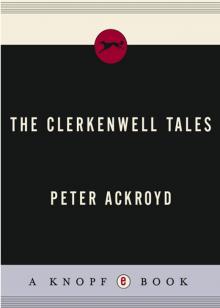 The Clerkenwell Tales
The Clerkenwell Tales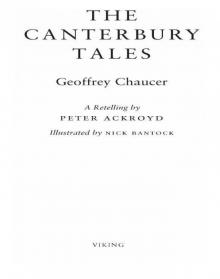 The Canterbury Tales
The Canterbury Tales J. M. W. Turner
J. M. W. Turner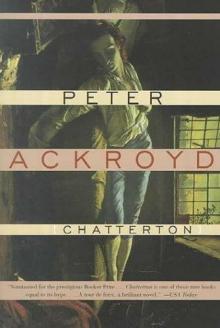 Chatterton
Chatterton The Canterbury Tales – A Retelling
The Canterbury Tales – A Retelling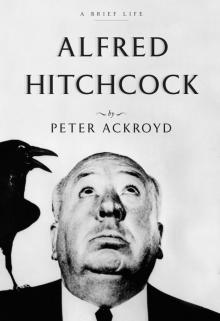 Alfred Hitchcock
Alfred Hitchcock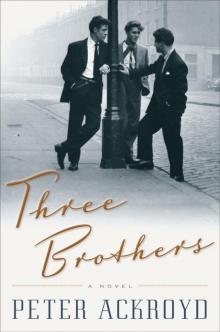 Three Brothers
Three Brothers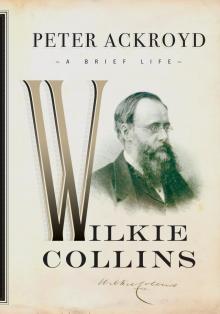 Wilkie Collins
Wilkie Collins Venice
Venice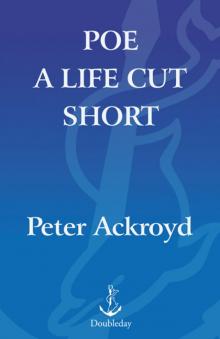 Poe
Poe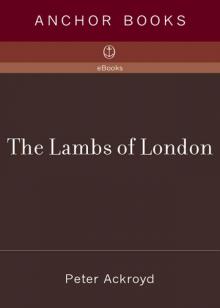 The Lambs of London
The Lambs of London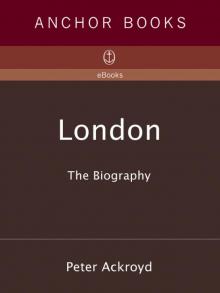 London
London Queer City
Queer City Revolution, a History of England, Volume 4
Revolution, a History of England, Volume 4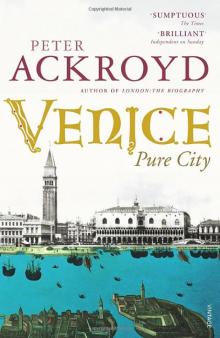 Venice: Pure City
Venice: Pure City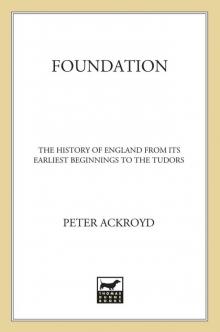 Foundation
Foundation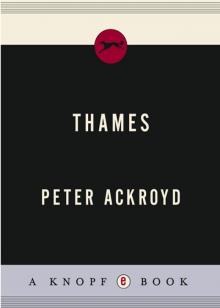 Thames
Thames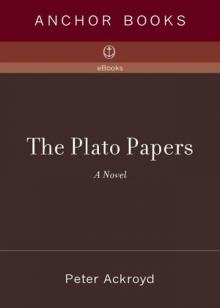 The Plato Papers
The Plato Papers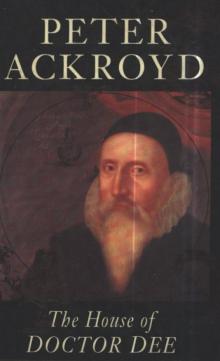 The house of Doctor Dee
The house of Doctor Dee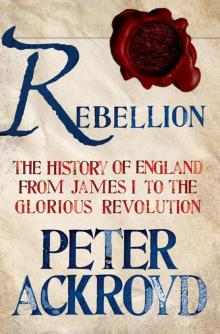 Rebellion: The History of England from James I to the Glorious Revolution
Rebellion: The History of England from James I to the Glorious Revolution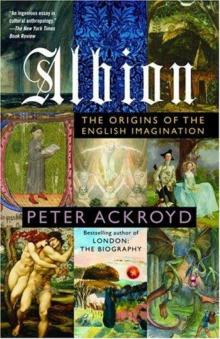 Albion: The Origins of the English Imagination
Albion: The Origins of the English Imagination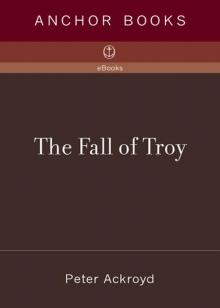 The Fall of Troy
The Fall of Troy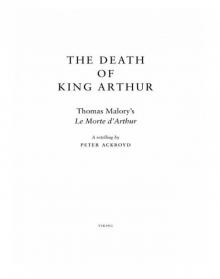 The Death of King Arthur
The Death of King Arthur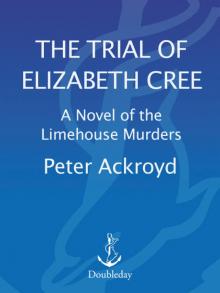 The Trial of Elizabeth Cree
The Trial of Elizabeth Cree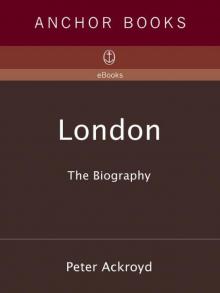 London: The Biography
London: The Biography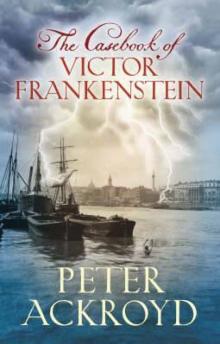 The Casebook of Victor Frankenstein
The Casebook of Victor Frankenstein Hawksmoor
Hawksmoor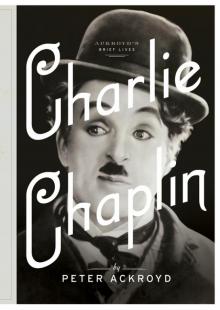 Charlie Chaplin
Charlie Chaplin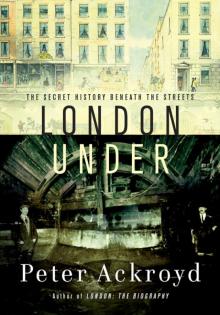 London Under
London Under